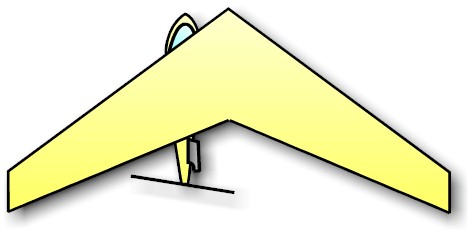|
I tried many ways to combine a flying wing and an
asymmetrical design in a theoretical way.
Let me explain this design. The weight of the fuselage compensates the
moment creates by the engine and prop (turning the airplane around the
horizontal axis (from front to rear)) . The prop is no longer placed in
the center. It would push the plane into a right turn around the vertical
axis.
What forces do we have left to compensate? The drag of the fuselage, the
thrust of the prop and maybe the force that is pushing the tail (exists in
a airplane using a tail, see drawings in section weird aviation designs).
I don't know if the last named force still exists in a tailless design.
Lets look at the way these forces work. The drag pushes the fuselage
backwards and creates a left turning moment. The thrust of the prop pushes
the fuselage forwards and creates a right turning moment. The size of the
forces depends on many factors. If you have calculated the forces of your
design you could let these forces compensate each other by placing the
prop under an angle (turning the prop towards the center of gravity). You
have to calculate the right angle according to the forces.

I know that these forces change according to the speed. So choose the
speed you like best compensated. I would suggest the take-off or landing
speed.
As I said, there are no such designs flying yet. So if you are a beginner
and if you are thinking about testing it out, be sure to ask help from
more experienced designers or to build your models in cheap materials. It
could happen you will have to rebuild the model a lot. Foam covered with
balsa seems an easy way to me. Have fun with the experiments.
If you could send me some picture of your model, I
surely will place it on this page. Please, a JPG-file and maximum width of
550 points.
|